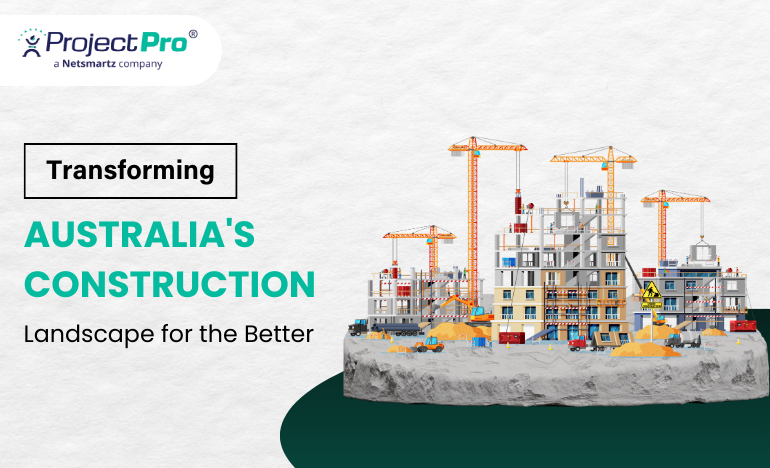7 Critical Aspects for Managing Your Construction Project Risks

Several industries encounter a variety of risks, and we know construction is not an exception. In construction, any risk would derail your plans. And unfortunately, accounting for construction projects is very challenging.
Comparing construction to other industries makes it apparent why risk management is much more complex for contractors. This is why planning an effective risk management strategy becomes imperative for construction companies.
On the one hand, numerous risk factors have to be considered before, during, and after the construction project. Construction imposes demands on the contractor every time. While creating an actual risk or cost forecast may seem impossible, you can decentralize risk management with a construction risk management plan.
In general, there are two basic methodologies in risk analysis, one is qualitative and one is quantitative. The major difference between these techniques is that quantitative analysis focuses on quantities that can be measured in digits. A descriptive qualitative study manages aspects that can be viewed but not estimated. Let’s dig deeper into this method.
Qualitative Aspects of a Construction Risk Management Plan
Qualitative risk analysis is measured for all risks and for all projects. It estimates both the probability of a particular risk incident happening throughout the project life cycle and the influence it will have on the prevailing schedule if it happens.
Qualitative risk analysis is more subjective. The advantage is that it enables you to assess the probability and put risk in the first place to digest it in a proper way to demonstrate it to stakeholders. Another advantage is that it can handle risk at any project stage.
What risks does your construction project impose?
In a nutshell, the risk management process is a series of steps determining the risks for a project's successful completion. Construction projects can pose numerous internal and external risks that may include:
Financial risks
Fluctuating material costs, payment delays, improper estimation, or the financial inexperience of the contractor are some of the financial risks in a project.
Environmental risks
These include natural disasters and harsh weather conditions such as pollution, earthquakes, and seasonal implications.
Technical risks
These include preliminary design, vague site investigation, design errors, unavailability of materials, or changes in project scope or needs.
What are the possibilities and severity of your risks?
When planning your construction project, you should evaluate a risk assessment matrix to analyze risk. By doing so, your construction company can identify various risks and develop various risk strategies by estimating the possibility of occurrence. A risk matrix is also called a Probability Matrix or Impact Matrix.
One of the questions you should begin with is, "What could go wrong?" Think about possible risks to prevent these cases from happening, then follow these steps:
1. Identify perils:
Consider all the possible risks that could damage your construction project.
2. Analyze the risks:
Once you have determined the suitable dangers, the next step is to assess them carefully.
3. Evaluate the harshness of the risk:
Describe the potential damage or result of the risks, then grade them accordingly.
4. Evaluate the possibility of the risk:
Evaluate the possibility of specific risks arising during your project lifecycle and grade them.
Who is accountable for handling each risk?
Once you've determined and rated the risks, it's time to set up the position of a risk owner. This would be the person or a team that ensures the risk will be managed appropriately. The risk owner will control any steps to address each identified risk.
In the construction industry, both the project owner and the contractor make efforts to manage risk. Assigning a risk owner is essential because this ensures that a risk response plan is devised, maintained, and quickly acted upon.
How should contractors act if any risk occurs?
Now that you’ve rated the risks and determined the owner of each risk, it’s time to plan how to address each one. There are multiple risk response strategies, each with detailed actions to implement. These strategies include:
-
Avoid Risk:
Although the project team can never eradicate all risk incidents, specific risks may be avoided, by increasing resources or timing, reducing the scope to avoid high-risk activities, or avoiding an anonymous subcontractor.
-
Transfer Risk:
Redirect the significance of a risk to a third party. Sharing the risk does not eradicate the risk itself. Risk transfer almost always affects the payment of a risk premium to the party taking on the risk.
-
Accept Risk:
Your project team may choose to keep the project plan and deal with danger or cannot identify any other appropriate response strategy. In this case, a contingency plan is required in case a risk arises.
How will you calculate risks throughout your project?
By nature, risks stem from delays and are outside anyone’s control. The most helpful thing a project manager can do is to determine, analyze, and monitor risks. As conditions, stakeholders, and requirements change, the nature of threats and intended responses should also vary. Risk monitoring involves:
-
Looking for determined and new threats.
-
Taking prompt curative action when a risk materializes.
-
Planning preventive actions when you specify a trend for a new risk.
-
Estimating the significance of risk responses.
Quantitative Elements of a Construction Risk Management Plan
Once the qualitative risk inspection has been accomplished and recorded, it’s time to allocate a numerical value to each risk. During quantitative risk management, the influence of risk on the project is converted into numbers.
This data is used to define the cost and timing of the construction project.
Quantitative risk analysis is ideal. For instance, it can be estimated that maybe your company has a 60% risk based on quantifiable data such as variation in average logistics, resource costs, and time completion.
What construction cost contingencies should you allocate?
Contingency, or the reserves added to the bottom cost estimate to shield any delay or risk vulnerability, forms the material side of risk management. By counting contingency into the total project cost, the project management team can protect exposure to risk, which builds confidence and improves clarity and project performance. Contingency can be calculated using the following:
-
Deterministic approaches:
When the contingency is measured as a calculated percentage of the core cost relying on the phase of your project.
-
Probabilistic approaches:
When anticipations are shown in the cost estimate using statistics distributions.
What is a suitable course for your project?
Schedule risk research helps to assess the potential effect of uncertainty on the project duration and cost. During this study, a project manager determines the risks to the project plan and suggests measures to mitigate these risks to achieve a better outcome.
No one peeks into a crystal ball when estimating activity time and costs. Project managers often need to be more delighted and reserved, which can lead to estimation errors.
Bottom Line
We hope the above-mentioned approaches will help you better manage your construction project risks. As the technology is evolving, contractors need to adapt to the change. New digital technologies like ProjectPro can help you stay ahead of all types of project management challenges for construction companies.
With the power of Microsoft Dynamics Business Central, ProjectPro can help you streamline your construction project efficiently.




.jpg)


